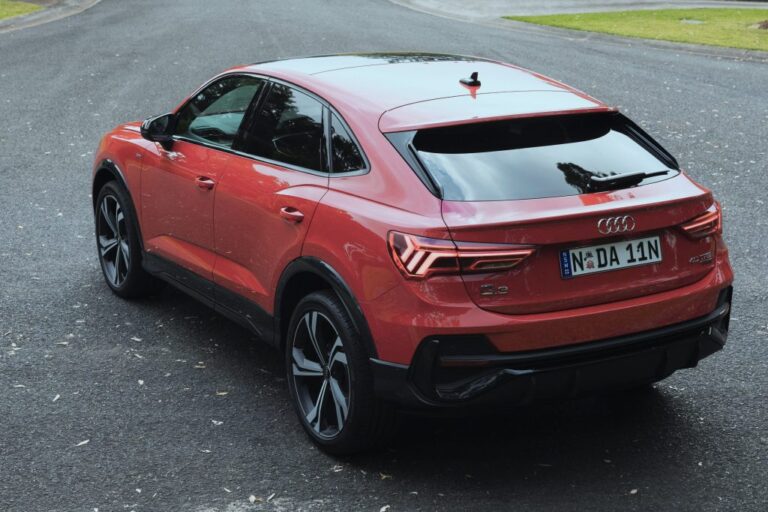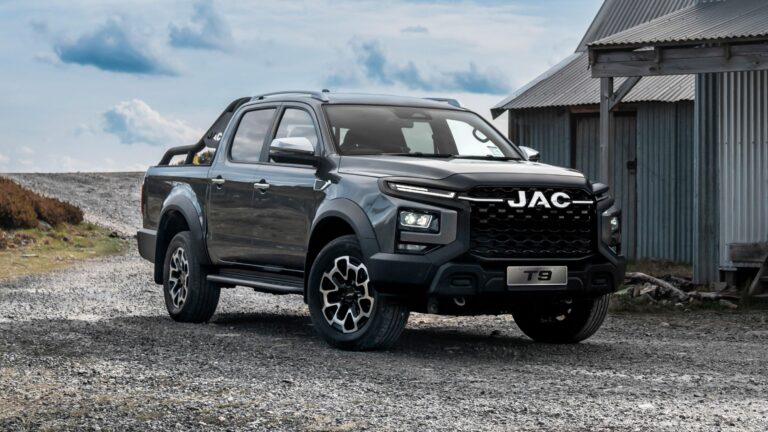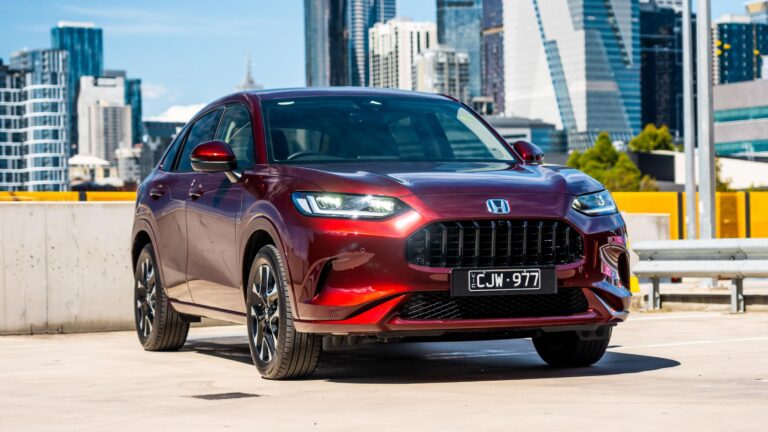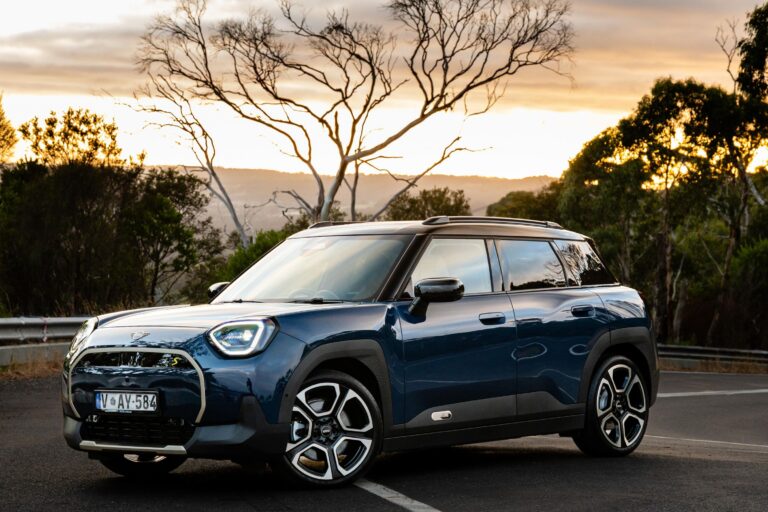2025 Ford Ranger Raptor vs F-150 Raptor vs Bronco Raptor
The Ford Ranger Raptor is now a common sight on Australian roads. While it is mostly used as an everyday vehicle, its capabilities are not limited to the city. In fact, it can do things that most cars on the market are unable to do.
We recently had the opportunity to participate in a special drive program in the Middle East at the invitation of Ford, where we were able to experience not only the Australian Ford Ranger Raptor, but also the real Raptors, namely the F-150 Raptor and the Ranger Raptor’s twin Bronco Raptor.

Before this journey, we were surprised to hear a fact—one in every six Ford Rangers is a Ranger Raptor, which has no direct competitors in the market. This has been more successful than Ford expected and has created a big profit opportunity for the brand, as the Ranger Raptor is already a highly profitable product.
For Ford, this journey began 15 years ago with the F-150 Raptor. Using old F-150s like the SVT Lightning from the 90s as a starting point, Ford created a special race-ready truck that was the first F-150 Raptor.
Today’s F-150 Raptor is much more advanced in terms of technology and performance than ever before, but it’s still based on the same basic structure, which includes Fox shock absorbers, a wider track, long-travel upper and lower control arms, and a powerful engine.
The Bronco Raptor is the direct descendant of the Ranger Raptor. It shares the Ranger’s platform, but borrows some of its front end from the F-150 Raptor. Its massive 37-inch tires and fearsomely wide track make it clear what it’s made for.
What’s surprising is that both the Ranger Raptor and the Bronco Raptor are designed and engineered in Australia. Before work began on these vehicles, the Australian team had just finished building the fast Falcon XR6 and XR8 Sprint. All of them are motorsport enthusiasts who already have a knack for off-roading, and they’re taking on this huge challenge with that experience.
Ford Performance DNA is infused into vehicles that push the boundaries of off-road performance. The Ranger, Bronco, and F-150 Raptor each have BFGoodrich KO2 tires, which don’t perform well in the wet, but are great off-road.
Each vehicle has a large turbocharged gasoline engine. They’re a bit pricey on fuel, but they perform amazingly well off-road. The DNA of this is to make a vehicle fit for a specific job without compromising on performance. And in this case, that job is going at breakneck speed off-road.
Our Experience
We had the opportunity to test three vehicles—the Ranger Raptor, Bronco Raptor, and F-150 Raptor—for two days. Each vehicle was driven on a track that suited its specialty.
- Ranger Raptor: For technically challenging sand tracks, winding trails, and high dunes.
- Bronco Raptor: For climbing rocky hills and traversing steep rocky roads.
- F-150 Raptor: For speeding through sand.
We start with the Ranger Raptor. Since I’ve been driving it myself for the past two years, I enjoy the experience every time I drive it. Usually, after spending a week with a test car, my interest wanes, but the Ranger Raptor is different.
To test the car’s limits, I put it in Baha Mode. This activates 4H (four high), holds the gear for a long time, the suspension, steering, and exhaust go into Baha mode, and the anti-lag feature is activated, which makes throttle response much quicker.
That feeling is hard to describe
I can’t really put into words—because I have to experience it myself—how the car’s suspension feels so smooth and supple, especially when it’s going over sand ruts and small bumps at high speeds.
The Fox shock absorbers feature Live-Valve Technology, which can electronically adjust the compression tuning. Ford has also done a lot of research and fine-tuned its internal shims and control valves to effectively control the flow of fluid inside the shock absorbers.
When you go over a big rut or bump and the car bounces up, you expect the bump to be quite painful when you get off. But in reality, it feels as soft as falling on cotton. Because the shock absorbers can absorb a huge amount of energy, the passengers inside the car don’t have to feel the impact.
Comparative Performance
The Ranger Raptor feels more agile and controllable in the dunes than the Bronco and F-150—something that could never be said of the mainstream Ranger. There’s no lag like the previous-generation turbo-diesel model; it responds quickly.
On wide, open roads if the accelerator is pressed hard, it distributes torque nicely between the front and rear wheels. It doesn’t rely too heavily on the rear wheels, but it does provide enough back power to turn the tail in 4H mode. The steering is also direct and precise, making it easy for the driver to control.
Braking and Steer Mode
In Steer mode, the anti-lock braking system (ABS) gives a little extra play, helping to slow down the car in the event of a layer of sand accumulating in front. Normal ABS prevents the wheels from locking up during heavy braking. However, off-road, it increases braking distance, as the car thinks the wheels are locking up due to the low-friction sand.
This special brake setting can cause the wheels to lock up for a short period of time, which creates a pile of sand in front of the tires and helps the car stop faster than normal.
Final Thoughts
The Ranger Raptor is no ordinary pickup truck. It’s built to do its job—off-road at top speed, with no compromises. Its engine, suspension, steering, and braking all work together to deliver a unique experience that can only be experienced by driving it.
We keep asking ourselves why Ford isn’t bringing the Bronco Raptor to Australia! For now, it’s only designed for left-hand drive and is only sold in left-hand drive markets. But since it shares the same platform as the Ranger, it makes perfect sense to add it to the Australian Raptor lineup.
But there’s one thing I hadn’t thought about before – the price! I looked it up on Ford US’s website and found that an in-stock Bronco Raptor costs around $100,000. Now, even if we factor in manufacturing costs, shipping and market-specific taxes, it would still cost around $170,000 in Australia before on-road costs! That would be way out of reach for most people – in short, way out of budget.
Now, before we talk about the drivetrain, let’s talk about the design – it looks incredible in real life! The track is so wide that it looks like someone spent $30,000 customizing it, and even the wheel-cover design looks like a modified car.

It has huge, exposed recovery points, full-on underbody protection, and huge 37-inch tires (even the F-150 Raptor doesn’t come with standard 37s!). But the most interesting thing is – the interior is completely different from what I thought it would be!
While the Ranger Raptor has a premium feel that befits its price, the Bronco Raptor feels a bit cheaper, especially in terms of materials and fit-and-finish. Surprisingly, it costs almost $100,000 more than the Ranger Raptor, but you don’t feel it at all when you sit inside the car!
However, once you start driving, everything changes. Both the Ranger and the Bronco Raptor use the same 3.0-liter turbocharged V6 petrol engine, but the Bronco’s output is slightly higher. And since its exhaust is located just below the cabin, you can hear a slightly more halo-like roar when sitting inside, which creates a different feeling.
Like the Ranger, the Bronco also has multiple driving modes and a diff lock. While both have front and rear diff locks, the Bronco has an additional sway bar disconnect feature, which gives it more advantage on rough roads.

Although the Bronco is built as powerfully as the Jeep Wrangler Rubicon, it still uses independent front suspension (whereas the Wrangler has a live front axle). As a result, the Bronco’s steering control feels much better – while not as precise as the Ranger, it’s not as jerky as the Jeep either!
Our Bronco Raptor drive loop started on the highway, then we gradually descended onto rocky roads, where we had to negotiate steep ups and downs at a slower pace.
While the Ranger has a bit more power than the Raptor, the Bronco doesn’t fill up as quickly. That’s because it’s heavier than the Raptor, and its aerodynamic design is such that it traps more air, which slows it down a bit.
However, these things don’t really matter when rock-crawling. Here, we used the Sue Bar Disconnect feature, along with the low-range mode for low speeds. This track involved climbing up and down steep inclines, along with tight turns where maneuvering the car required a bit more attention.
While this track isn’t the toughest road in the world, it showcased the Bronco Raptor’s incredible off-road prowess. Most people don’t do much heavy off-roading, but the Bronco Raptor is a car that comes with everything you need, with no need to add anything extra. Best of all, you don’t have to go through the hassle of installing additional off-road accessories, and it won’t void your warranty!

On-road, there are some compromises (like wind noise and tire noise), but off-road, it makes up for them with the great features of its standard four-wheel drive system.
Finally, we drove the F-150 Raptor. Although it is not the top-of-the-line Raptor R model, but rather the standard Raptor, believe me, it is more than enough for this truck!
The Raptor R has a supercharged V8 engine, while the standard Raptor comes with a 3.5-liter turbocharged gasoline V6 engine. But interestingly, it can generate more power than the Ranger and Bronco Raptors! And most importantly, it has the largest Fox shock absorbers, whose live-valve technology works on both compression and rebound, allowing for better tuning.
This track was fun, a bit faster, and had a great curved-out hoop section where we got a chance to test the full potential of the suspension!
In this section, we had to accelerate straight from a standing position to reach speeds of about 150 km/h, accompanied by one high and low bump after another – and that too with full throttle! Despite its large size, it handled this torture test of the suspension very well, feeling very balanced and powerful.
The exhaust note of the F-150 is also the most distinctive of the three. When it accelerates in Baja mode, it makes such a roar that it feels like it is breathing heavily!
Again, despite its large size, it was not too difficult to cross the sand dunes. A little more throttle when crossing steep dunes did the job, but you had to pay a little more attention when changing direction between dunes, especially due to its size.
Naturally, the cabin of the F-150 feels the most spacious – it is quite understandable! There is a huge space in the second row, and the width of the car is so much that you can comfortably spread your arms and legs!
It’s quite expensive – another reason it’s not sold in Australia. To make it economically viable after conversion, the price would be close to $200,000, making it difficult for Ford to sell enough to make a profit.
The three can’t be compared, but if money were no object, which would you buy? Interestingly, the cheapest one is actually the most versatile. The Ford Ranger Raptor is relatively inexpensive, offers excellent off-roading performance at low and high speeds, and has the most premium feel in terms of interior design, fittings and finish.
But whichever one you buy, you’re sure to be happy with it. There’s nothing else on the market that offers a factory-backed package like this.
It’s really great that cars like this are still on the market. And I’m absolutely jealous of all the great off-road tracks in the Middle East!






